Introduction: Let’s Be Honest. You’re Not a Mind Reader
Ever launched something and the response felt flat? Or worse, the feedback lands like a punch, “Did anyone even test this?”
If that stings, you’re in good company.
Here’s the thing. Good UX design rarely comes from gut feelings, late-night whiteboard sessions, or copying what the competition is showcasing. It comes from digging in, talking to people who will use what you build, and letting that guide your choices.
UX research works like a map before a long drive, or a recipe before you start cooking. Skip it, and you are throwing ingredients in a pot and hoping for the best. Users notice that.
So, let’s break down what UX research methods mean, why they often beat UI alone, and how you can use them to create something people want to use.
Explore our End-to-End UI/UX Design Solutions to see how strategic design can improve user experiences.
What Is UX Research? (And No, It’s Not Just Surveys)
User experience research is the process of understanding your users’ behaviors, needs, goals, and frustrations so that you can design something that solves their problems.
Simple, right?
It involves talking to people, observing what they do (not just what they say), and analyzing the data to inform user experience design decisions.
Example
Let’s say you’re designing a to-do app. You assume users want colorful animations to make task-checking “fun.” After a few interviews, you realize they just want one thing: speed. They don’t care about confetti. They just want to add a task, check it off, and move on. That’s user-centered design and UX testing at work.
Learn more about UX Design for Websites and how research informs better digital experiences.
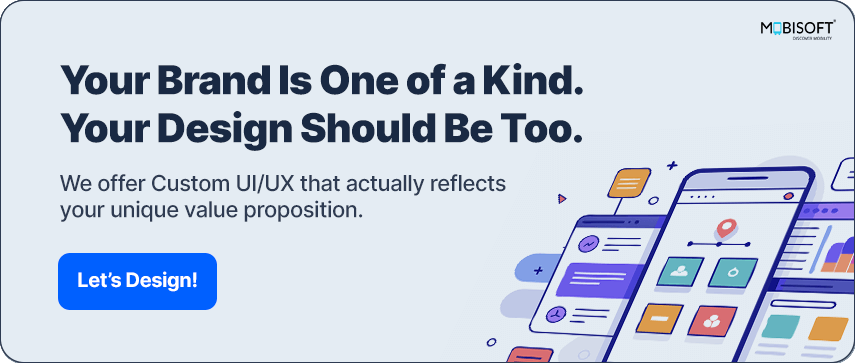
Why UX Research Is the Foundation of Great User Experience Design
It Makes You Design with Purpose
Without research, you’re designing in the dark. You don’t know what users need. You don’t know what frustrates them. You’re guessing, and let’s be honest, you're not paid to guess.
UX research gives your design research direction. It replaces opinions with evidence.
It Helps You Avoid Embarrassing Mistakes
Ever seen a subscription cancellation form with a “Cancel” button right next to “Submit”? It will confuse users. That’s a mistake you could catch with usability testing.
Example:
In one study, an e-commerce site found that users were dropping off because the “Buy Now” CTA is not clear, and there are a few other actions present with the same importance. A quick test revealed the issue. A new button fixed it. Boom. Conversions up.
It Saves Time (Really)
Many teams think skipping research will speed things up. Spoiler alert: it does the opposite.
Without a UX strategy and research, you waste time building features with undesirable output, only to scrap them later. A few hours of user experience testing techniques upfront can save you weeks of rework. Always remember Time = Cost.
It Boosts User Satisfaction
When you design based on human-centered design and user input, they feel heard. Your product feels like it “just gets them.” That’s how you build loyalty. After all, the product is for your end user’s satisfaction, not for yours.
Discover our approach to Mobile User Experience Design for Apps to create intuitive mobile products.
Types of UX Research (Pick What Fits Your Stage)
There’s no one-size-fits-all method. The approach depends on your product phase, team size, budget, and goals.
Generative Research in UX Design (Discover What to Build)
Used early on to understand user problems.
- User interviews
- Surveys
- Field studies
Example: Interview five freelancers to learn how they manage invoices. Patterns will emerge. Boom insight.
Conducting Effective User Interviews and Surveys for UI/UX Insights
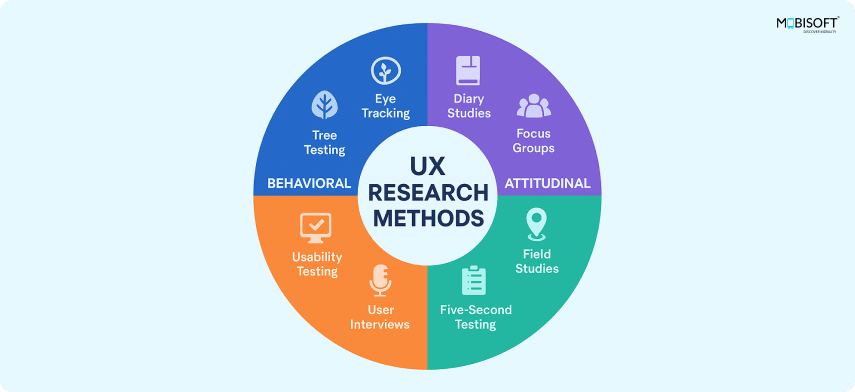
User interviews and surveys can be split into two main types: Quantitative surveys and Qualitative surveys.
Quantitative Survey
The goal of this type of survey is to gather data from users in bulk. Data collected from these surveys will provide statistical output like “how many males & females are using this app”.
The larger the data pool, the better statistics you will be able to get. But don’t go overboard and survey 1000s of people, the sweet spot is you can survey a minimum of 15-20 people & maximum of 50-55 people is enough most of the time.
Depending on the scale, reach, age groups & other variables, you can expand those numbers. Use Google Form, Survey Monkey, or even old-school forms on paper to get the answer.
To conduct the best Quantitative Survey, follow the instructions below:
- Ask closed-ended questions & multiple-choice questions
- In multiple choice questions, provide an option of other; users can write the answer that is not available in the provided options
- Keep only the necessary questions in the survey. If you have some questions which is not necessary but good to have, then keep them non-mandatory
- Don’t include more than 10-12 questions in the survey; users will skip just by looking at the question quantity.
Qualitative Survey
Opposite to a Quantitative survey, the goal of a Qualitative survey is to gather insightful data from users. You can survey a small number of people, but those should be key users. This type of survey is done in one interview format.
You can conduct it in person or over the phone. It is a bit lengthy, time-consuming & costly at times, but it can give you answers that can help you understand users very closely & identify the real gaps.
To conduct the best Qualitative Survey, follow the instructions below:
- Ask open-ended questions
- Improvise questions depending on user answers
- Ask tricky questions to identify the gaps
- Never force users to answer personal questions, guide users to complete the answers, or mock users if answers do not match your perspective.
Why Surveys Matter in UX Research
Think of surveys as two different lenses in UX research methods. The quantitative survey side presents the hard numbers, showing you just how big a problem it can become. The qualitative survey side is where you hear the stories, the reasons, and the little frustrations that numbers never catch.
When you line them up together, patterns begin to emerge. Stuff you might completely miss if you only looked at one angle. You also get a better sense of what deserves your attention before you pour in time or budget.
Handled well, surveys cut out a lot of blind guessing. They give you solid ground to stand on, so you can shape user experience design around what people need instead of what you imagine they want.
Evaluative Research in User Experience (Did We Build the Right Thing?)
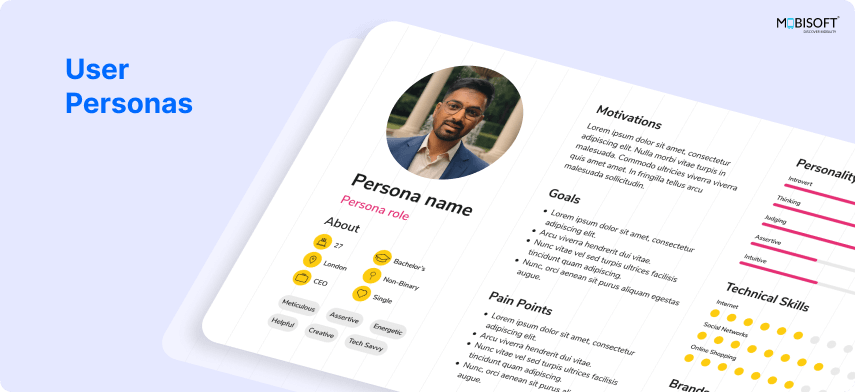
Evaluative research is about testing your UX design ideas or prototypes. It includes methods like:
- Usability testing
- A/B testing
- Heuristic evaluation
Example: Test your sign-up form with real users. If three out of five people click “Back” instead of “Next,” you’ve got work to do. This is where user experience testing techniques can highlight friction before launch.
When to Use UX Research in the Design Process
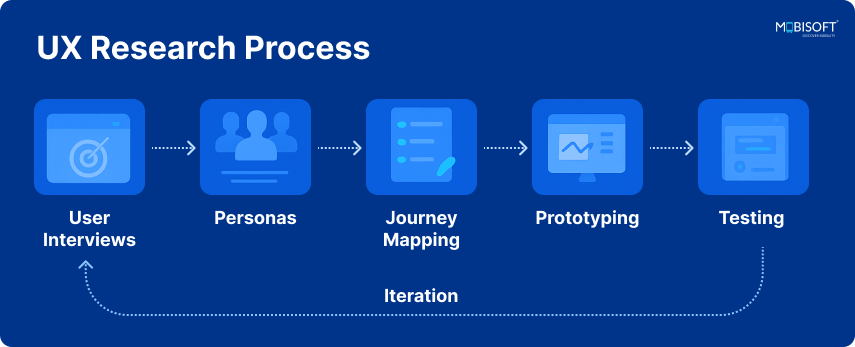
At the Beginning
Start with research. Always. Understand the problem before proposing a solution.
Think of it like going to a doctor. They don’t prescribe meds before asking what hurts. You shouldn’t design before learning what users struggle with.
During Design
Use your findings for customer journey mapping, wireframing and prototyping, and testing. These tools help bring clarity and structure to UX design.
After Launch
The job’s not done at launch. Collect feedback, monitor behavior, and refine. UX research consulting or working with a UX research company can also help scale improvements.
Get expert help from UX Design System Experts to streamline your design process.
Common UX Research Mistakes (And How to Avoid Them)

Skipping It Entirely
“We don’t have time for research.” That’s the most expensive sentence in product development.
Asking the Wrong Questions
Avoid leading questions like, “You like this feature, right?” Instead, ask open-ended ones like, “How would you complete this task?”
Ignoring the Data
Don’t let design ego override UX research tools or findings. If "5 out of 10" users struggle with your navigation, you’ve got a problem, even if you love it.
Only Testing with Internal Teams
Your coworkers are not your users. Step outside the building. Talk to real people. This is where ethnographic research in UX becomes valuable for authentic insights.
See How UX Design Impacts Conversion Rates with practical insights.
How to Get Started with UX Research (Even If You’re Busy)
Talk to 5 Users
That’s it. No lab, no fancy tools. Just five honest conversations. Patterns will show up faster than you think.
Use Tools That Do the Heavy Lifting
- Google Forms for surveys
- Look back for interviews
- Hotjar for behavior analysis
- Maze for testing prototypes
Make It a Team Sport
Bring your PMs, devs, and marketers into the research process. Let them hear real users struggle. It builds empathy like nothing else.
Follow Mobile App UX Best Practices to refine app usability and engagement.
Final Thoughts: Want Better UX Design? Start With People
Design is not about pretty buttons or clever layouts. It’s about solving real problems for real humans. And the only way to know what those problems are is through user experience research.
So before you dive into Figma, open your calendar. Book time with users. Ask questions. Watch them use your product. Take notes. Learn.
The insights you uncover through UX research vs UI design comparisons, UX strategy, and continuous user experience research will change the way you design.
Your users will thank you with loyalty, love, and maybe even a five-star review.
Need professional support? Find the Best UI/UX Agency for Your Needs.
Want a Quick Start? Mini UX Research Checklist for Designers
- Talk to 5 users
- Record 3 usability sessions
- Ask open-ended questions
- Summarize key pain points
- Share findings with the team
That's it. Now go build something people want to use.
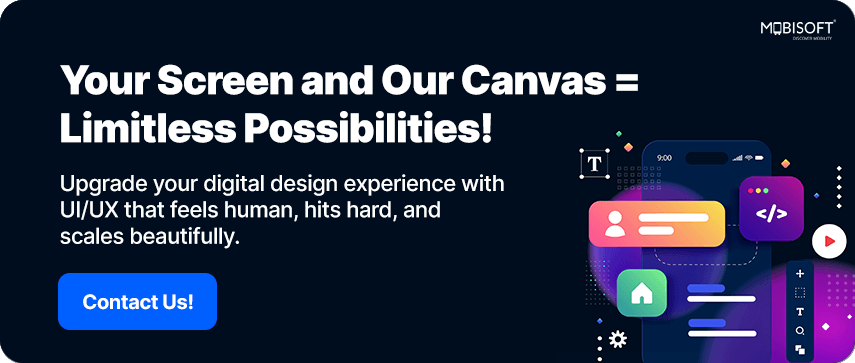




 June 18, 2025
June 18, 2025


